Hi there, my name is Jonathan from Permaslug and today I’m going to walk you through my personal opinion and review on Oxygen Builder for the year 2021. This will be my fourth full year of using Oxygen and it has essentially transformed my business, so I’m very excited to share it with you.
History prior to Oxygen
I started off building WordPress websites in 2014 with essentially no coding knowledge, so I quickly gravitated towards things like wpbakery, Divi, Elementor, Beaver Builder, Etc. I was trying to find a blend of flexibility and ease of use that would allow me to build the sites I needed, but without writing any custom code.
As you probably know this is nearly impossible and requires some kind of sacrifice, whether that be in the speed of the site, functionality, time investment, or in overall customization.
In every other builder, I had to sacrifice different things depending on the project which meant that I had a site that worked but it was bloated, or didn’t quite do what I wanted it to do. The functionality was almost never exactly where I wanted it to be, either.
With Oxygen I’ve been able to have my cake, eat it too, and still have leftovers.
My transition into Oxygen took place when a client came to me with a completed mock up and said that they wanted the site to look exactly like their mock-up.
The design was pretty much impossible to do in something like wpbakery which was my primary builder at the time, so I went looking. I spent time in almost every page builder you can name and eventually discovered Oxygen when it was back in version 1.1. The flexibility of Oxygen even back then was incredible, but it was nothing like it is today in terms of usability.
I started using Oxygen to build that site and it took me significantly longer than a typical site I would build at the time, but it did allow me to achieve that layout that the client was after.
I was a bit frustrated with how long it took though, so I eventually went back to wpbakery for some time.
After a while, a big focus area for me to grow my business was around creating custom designs and also providing sites that were as fast as I could for clients. When I started to look at the designs and the optimization of the sites I was building in wpbakery or Divi, it was essentially as bad as it could get in terms of optimization (and design, for that matter).
Add in that I was unable to convert the designs that I envisioned or that I had designers produce for me, and I had a recipe that was leading me back to Oxygen.
Who is Oxygen right for?
When it comes to whether or not Oxygen is right for you leads to one common question: do you need to know custom code to be able to use Oxygen?
I’ll answer that for my own personal perspective which is that I came to Oxygen with almost no knowledge of anything related to CSS, HTML, PHP, or any other programming language.
About all I could do in CSS was extremely basic things like change text color or font weights and that was about all I was equipped with.
Even without that knowledge, right off the bat I was able to build sites in Oxygen that were more complex, more capable, and more consistent with the designs that I was working off of than ever before.
As you start to garner some knowledge and build some confidence in Oxygen, you quickly realize that the things that you want to be able to achieve are going to be much more doable if you have even a basic understanding of PHP and CSS. The beauty of this is that you can find a lot of working code examples online that then you’re able implement in Oxygen with relative ease.
So the question as to whether or not you need to know coding before using Oxygen to me comes down to whether or not you are willing to learn.
As long as you’re willing to at least try to take the time to try to figure it out and learn, you’re going to be able to build bigger, faster, better sites than you ever thought possible, even with a relatively simple understanding of those previously mentioned languages.
I still consider myself a relative newbie when it comes to coding and I’ve been able to achieve some pretty incredible things over the last couple years. Whether you have an employee or use contractors, having someone accessible that actually knows coding languages like PHP, CSS, and JavaScript inside and out will afford you some pretty incredible results on almost every site you build.
For myself, my website design business is still quite small, but with Oxygen I’ve been able to take on bigger sites than I could’ve ever dreamed of in years past. What that has meant from a business perspective is the first full-year I used Oxygen I doubled my revenue, the second year full year we did 15% more, and this current year is looking up to be even better than the last.
Benefits of Oxygen
We’ve already touched on a few of the main benefits of Oxygen from my perspective, and the primary ones come down to flexibility, customisation, and speed. Each of these all could be talked about at length but for me the flexibility comes down to having complete control over every aspect of your site.
No longer are you limited to what your theme will allow you to do, if you can envision it then you can almost certainly achieve it in Oxygen. Because I’m certainly not a designer, I’ve had a proper designer create the layout and design for almost every site that I work on for some time, or clients come to me with completed mock-ups and we simply turn them into functioning sites.
That flexibility thanks to Oxygen is pretty much unmatched in any other Builder, and if I weren’t using Oxygen I wouldn’t build the vast majority of the sites that we build.
When it comes to customisation that to me means the ability to build custom layouts or custom functionality for your clients that allow them to modify elements of their website with relative ease. A really common example would be giving your client the ability to add and edit team members on their site, add edit or remove testimonials, and any other frequently updated pieces of content like blog posts without them having to touch any builder.
They can use the familiar WordPress interface and Oxygen does the heavy lifting of rendering the site on the front end for them. This flexibility extends even further when it comes to third party plugins because you can set these plugins up in ways that would otherwise be completely impossible without building custom themes yourself.
Lastly, the main reason why I think the vast majority of people move to Oxygen is for it’s speed. If you do a little bit of digging online you’ll find lots of comparisons between Oxygen and other page builders and in every single case Oxygen beats them out. This simply comes down to having a cleaner code output on the front end which results in faster load times, better page speed scores, and better user experience overall. If you’re someone that cares at all about SEO, I can’t overstate the importance of speed and clean code output enough.
Favorite Oxygen Features
Now we’re going to touch on a few of my absolute favorite features in Oxygen which are the templates, classes and Global colors, layout controls such as flexbox and CSS Grid, the deep integration with Advanced Custom Fields, and Conditions.
Each one of these warrant their own post entirely, but I’ll briefly touch on each one of them.
In terms of templates, you can build a different kind of template for every page or post across your site, giving you complete flexibility as to how you configure your layouts.

This means that you could essentially have one template that contains your header and footer, and then have a second template that contains something like a sidebar for a blog that only appears if the post being viewed is a blog post.
In this example, on your pages or anything that’s not a blog post, you wouldn’t see the sidebar.
A huge advantage here is that if you want to make a change to your blog sidebar like change a photo or swap a link, you go to one place and it reflects across the entire site, instead of having to manually adjust each post.
Another example where templates shine is the ability to create different kinds of templates for different kinds of content across your site. Earlier we mentioned the ability for clients to add and edit things like testimonials or locations, which means you can have an Oxygen template that renders a layout for that particular kind of post that looks completely unique to anything else across your site.
This means that you can have a layout that is meant for blog posts that is not shared to your locations or your team member posts.
Taking this even further, you can nest templates inside of each other which is a somewhat advanced topic, but this gives you an almost unimaginable level of control and ease of use when it comes to building your websites, however complicated they are.
The next feature I mentioned is Classes and Global colors. Classes behave essentially just like classes in CSS if you’re familiar with those. What it gives you is the ability to apply an identifier to a particular element and easily reuse that on any element across your entire site. Let’s say you want to style a heading in a particular way, instead of having to redo that styling on every heading, you simply add the same identifier, the same class, and anywhere that class applies the styling will be replicated for you automatically.
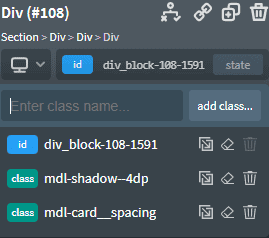
It gets even better than that because if you change the font size or color on a particular class, anywhere that class exists that change will be replicated, even if it’s in a different template or page. This is incredibly powerful as you start to build a design system on your website which will give you a better looking, more cohesive design.
You can even take classes a step further by having stacked classes for variants like light and dark versions of a heading or a button. One identifier might be button which contains spacing, typography, and shadows. Add in another class called light and the background switches, add in a class called dark and your background changes again.
Keep in mind these are extremely basic examples to try to give you practical examples of how incredibly powerful these features are.
Classes can apply to anything, whether it be images, buttons, headings, or any element across your entire site.
Global Colors tie into classes nicely but it is more or less a standalone future. What Global colors allows you to do is to define a color palette on your site so that you’re not having to manually attach hex or RGB colors on every element. If you decide you need to make an adjustment to one of your Global colors, you do so in the settings and then anywhere that Global color applies that color is updated for you automatically. Color adjustments for sitewide styles like backgrounds, hover colors, buttons, etc are now able to be updated in one place. No longer do you have to update those elements one by one.
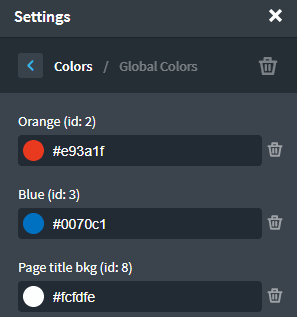
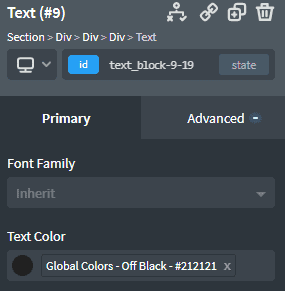
In terms of layout controls you have both the option to use flexbox and the recently-introduced CSS Grid feature in Oxygen. This gives you control to build layouts that are just simply otherwise impossible or extremely difficult to achieve in other builders. This particular topic warrants its own post entirely, but essentially it means that you can build any layout and create really comprehensive looking designs such as things like magazine or newspaper websites, custom blog layouts, Custom Sales Pages, etc. Basically anything you want, with enough practice.
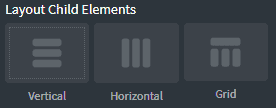
If you’re not familiar with Advanced Custom Fields, you certainly will be after you start using Oxygen. This allows you to create additional fields in the back end of your pages and post for data that then Oxygen automatically pulls into the front-end for you. We’ve already mentioned the example of adding things like locations to the back end, and you would typically add extra ACF fields like location, hours, phone number, etc and Oxygen will pull those into your template automatically for you. This gives clients or non-technical users the ability to update important information without touching any builder or any code, thanks to Oxygen templates and their deep integration with Advanced Custom Fields.
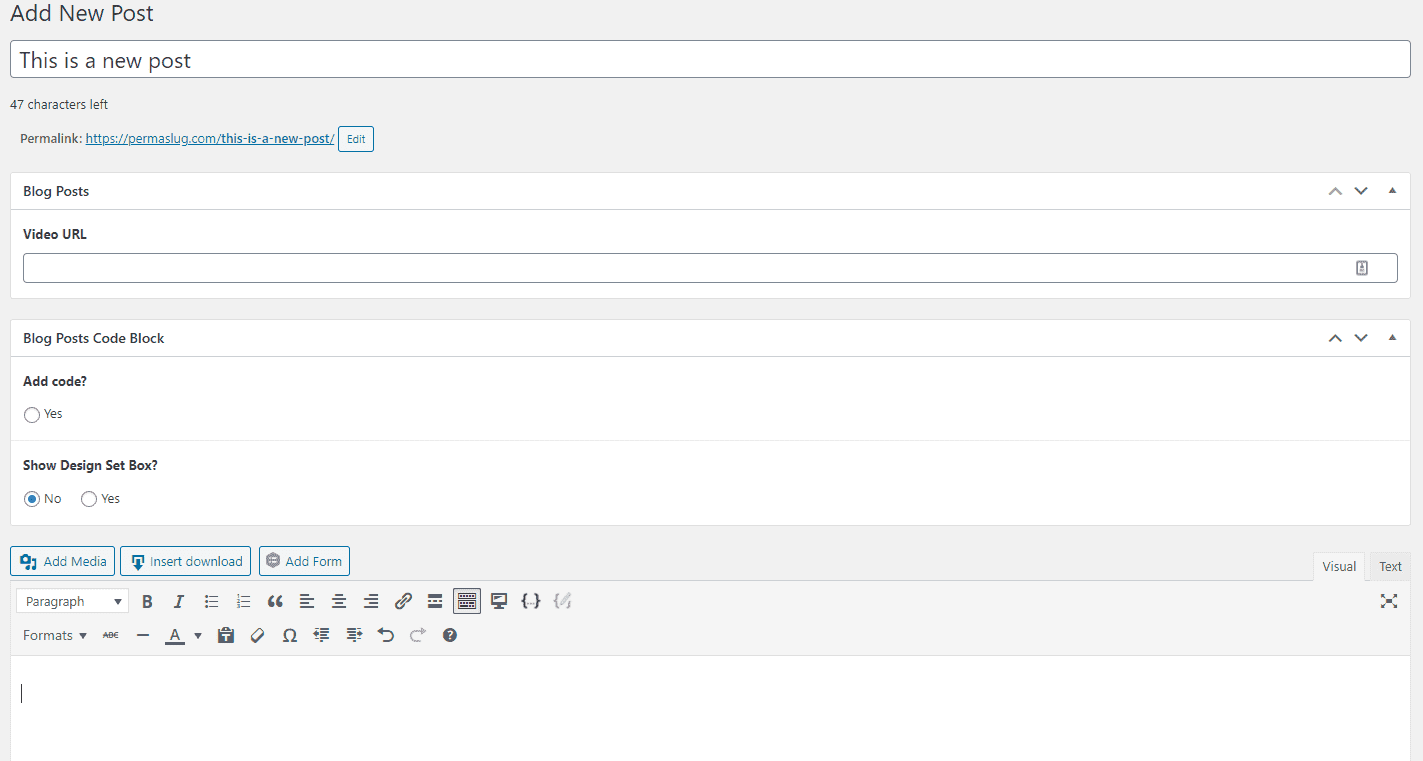
I think my personal Favorite feature when it comes to Advanced custom Fields is the repeater component, which allows you to build Dynamic lists that enable you to create data lists like FAQs, restaurant menus, and much more. Again, these are all editable in the back-end for easy client updates. There are a number of other videos on my channel that cover repeaters, so take a look at them because the possibilities when it comes to Repeaters are essentially endless.
Lastly, I mentioned conditions as a favorite feature which allow you to do things such as show and hide elements based on a number of different factors like what page the user is currently viewing, whether they’re logged in or not, what category they’re viewing, and much more.

If you want to show a login button when the user is logged out, and do the inverse if they’re logged in, you can do that with built in conditions, no coding required. That’s a very simplistic example, but there is extreme power hidden in the conditions. You can even custom code your own conditions with a little bit of PHP knowledge. This means if you have a membership site you can show and hide content based on people’s membership levels, for instance.
Trade Offs
Now I don’t want to make you think that everything in Oxygen is all champagne and Roses, because there are some definite challenges for you to consider. The main thing is the learning curve that it will take to get really comfortable with Oxygen, which in my opinion is worth it because in the long run you’ll be able to do so much more with it. You definitely will need to spend some time learning so I typically recommend that people start with a low priority website and build up from there. In my business, every single site that we build is in Oxygen but that took us well over a year to transition to that point.
In terms of flattening that learning curve I offer a full Oxygen course called Ultimate Oxygen Course which will help you jump start your learning with Oxygen.
The other thing to consider is styling might be a bit more difficult for some 3rd party plugins, because typical themes come with CSS styles for things like form plugins right out of the box. You can find lots of CSS styling that you can just paste in your Oxygen site to get great looking styles quickly.
You can also take advantage of Design Sets in Oxygen which allow you to import other users’ designs, or save your own to be reused on any Oxygen site. Typically people build a design system as their base Design Set and import that on every new install to speed up their workflow. You will need to spend some initially to develop your own design system, but that typically leaves you with a better end result.
Oxygen also has a number of design sets included and there are 3rd party design sets that can speed up your building process. The main one I recommend is OxyNinja.
I already mentioned the learning curve which is kind of connected to my final Point here in the trade-offs section which is the time investment it will take to get good at Oxygen. To me, the time investment is well worth it because of the power and flexibility that you gain which means you can build more complex sites more easily. This time spent is absolutely an investment, which for me has translated into more revenue than I could have ever dreamed of thanks to Oxygen.
Rewards
We’ve covered the trade-offs, but more importantly the results and the rewards of what you’ll get for those trade-offs is what we’ll cover next. I’ve already mentioned a number of times that it’s simply the most capable WordPress page builder out there. You’ll end up with faster sites that are as flexible as you need them to be. Really the only limitation is your own design skills and having a bit of proficiency with custom code, but like I’ve already mentioned I have brought in experts in those areas to help produce the best possible result I can for every project we work on.
The other big benefit like I already mentioned is if you are willing to learn the code, you will get significantly better at it in a very short period of time. I still have a long way to go when it comes to learning code and becoming proficient in it, but I can do infinitely more than I could before I started using Oxygen.
In addition to that, the Oxygen Community is growing rapidly and is very helpful. There’s tons of great resources with people making tutorial content, and there’s a healthy ecosystem of third-party add-ons, as well as social channels like Facebook and Discord which are are popular and very helpful.
Ready to get started?
Consider starting with a staging version of your own site or a more simple client site.
I already mentioned the Ultimate Oxygen Course that I offer and I have a lot of free Oxygen Builder tutorials here. There’s also tons of resources out there like the Oxygen YouTube channel and their official documentation. There’s a number of other great content creators on YouTube, as well as sites like WPDevDesign.com which has an amazing plethora of tutorials, both premium and free that will help you take your sights to the next level.
I always recommend people clone your site to a staging environment and then play with Oxygen from there to get a sense for how it’s going to work before committing to it full stop.
I hope this has been helpful for you and would love to hear your feedback.

